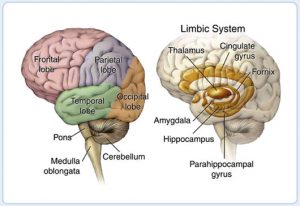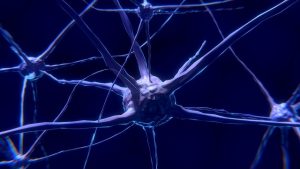
As a kid, recess is one of the best parts of the day, just a half hour to run around and do whatever. There were slides to slide down, things to climb, and games to play. It is a time when a kid can do whatever he or she wants. As fun as it, recess serves an important purpose. It not only fosters social development, but brain development. Physical activity and enrichment promote the development of new connections, aiding learning.
But this need for enrichment does not stop with childhood. The adult brain is remarkably flexible. However, the discovery of enrichment’s role is one of the most recent developments in neuroscience, so it is still unclear how exactly this development works or how flexible the adult brain is. Still, there is some benefit.
Enrichment
Enrichment affects the brain at both the cellular and molecular level. At the cellular level, it affects the brain in four different ways.
First, enrichment leads to a process called neurogenesis. This is exactly what it sounds like, the development of new neurons. More specifically, enrichment leads to the development of new neurons within the hippocampus. This brain structure helps integrate memories, making it easier to form new ones.
The second effect enrichment has is called gliogenesis. This is an increase in the glia cells, non-neuron cells that aid in neuronal function. These cells perform a wide variety of functions. (For a summary, click here). Forming new glial cells helps both new and existing neurons perform better. As with neurogenesis, enrichment forms new glial cells in the hippocampus. Glial cells are also formed in the neocortex, the outer region of the brain that is responsible for processing information. The neocortex is divided into four different lobes (seen in the figure below[i])
. These lobes connect with each other, which is how people process information. Increasing the glial cells improves the connections between these lobes, allowing for more efficient processing of information.
 [i] https://grey.colorado.edu/CompCogNeuro/index.php/CCNBook/BrainAreas
[i] https://grey.colorado.edu/CompCogNeuro/index.php/CCNBook/BrainAreas
The third effect, angiogenesis is not very well understood. Basically, it is improved blood circulation and nutrition to a certain area. In this case, enrichment leads to improved blood flow to the hippocampus and neocortex. Interestingly enough enrichment may have no effect on angiogenesis. It may be caused by physical activity alone.
Finally, enrichment causes synaptogenesis. The synapse is the gap between two neurons. It is the base for all interneural communication. Creating new synapses allows a neuron to connect with more neurons. It is sort of like discovering Google for the first time. Forming these new connections is how people learn. Like angiogenesis, it is still unclear what role enrichment has in synaptogenesis. It may have no role. Some studies have suggested that physical activity alone may be the cause of synaptogenesis.
Enrichment also affects neurons at the molecular level. It affects gene expression, neurotransmitters, and neurotropins.
Enrichment changes what genes get transcribed. This determines what proteins a nerve cell makes and what it can do. Enrichment promotes transcription of genes that improve learning and memory. Essentially, making an environment exciting enables further learning. Learning begets learning.

The exact effect of enrichment on neurotransmitters is unclear. Studies have failed to find any changes in base levels of acetylcholine, glutamate, and GABA. However, some studies have seen an increase AMPA and NMDA receptors. These receptors are critical in long term activation, a process that essentially makes a neuron more responsive. However, not all studies found the same result.
Lastly, enrichment also affects neurotrophins. These important proteins foster neuronal growth and development. Enrichment has been shown to increase levels of neurotrophins in the hippocampus, neocortex, frontal lobe, and cerebellum. Like angiogenesis, there is still debate on what role enrichment plays. Some studies suggest physical activity alone may be the cause of the increase.
What does this mean?
This information is very new. The experiments highlighting this phenomenon were not and cannot be done on humans. It is not only unclear what role enrichment plays in an animal’s life, let alone a human’s.
Still, there is a lot of hope that comes from this information. Enrichment may play a role in preventing pathological neurological disorders like Alzheimer’s and Parkinson’s. It may even give people with neurological disorders a treatment that does not involve medication. Enrichment could give people a sense of control.

As for people without these disorders, enrichment and physical activity can still be beneficial. It can lead to improved memory and cognitive processing. What exactly this enrichment looks like is vague and debatable. The rats in these studies are given lots of social interaction and toys to play with, things to climb on. It is almost like recess, but what does recess look like as an adult? Well that, dear reader, is up to you.
Go find your recess. [ii]
[ii] The Neuroprotective Effects of Experience on Cognitive Functions: Evidence from Animal Studies on the Neurobiological Bases of Brain Reserve.